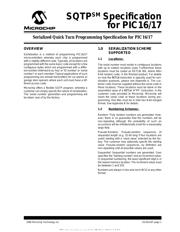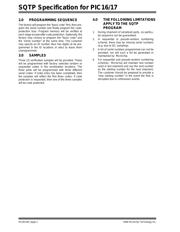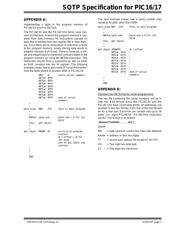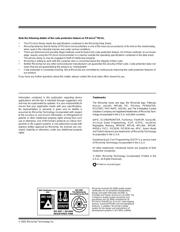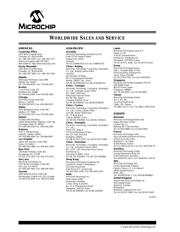Datasheet 搜索 > 微控制器 > Microchip(微芯) > PIC16C770-I/P 数据手册 > PIC16C770-I/P 用户编程技术手册 1/5 页
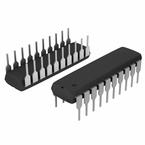
 器件3D模型
器件3D模型¥ 32.735
PIC16C770-I/P 用户编程技术手册 - Microchip(微芯)
制造商:
Microchip(微芯)
分类:
微控制器
封装:
PDIP-20
描述:
PIC16 系列 256 B RAM 2 K x 14位 EPROM 8位 CMOS 微控制器 - PDIP-20
Pictures:
3D模型
符号图
焊盘图
引脚图
产品图
页面导航:
典型应用电路图在P1
导航目录
PIC16C770-I/P数据手册
Page:
of 5 Go
若手册格式错乱,请下载阅览PDF原文件

1996 Microchip Technology Inc. DS30154F-page 1
OVERVIEW
Serialization is a method of programming PIC16/17
microcontrollers whereby each chip is programmed
with a slightly different code. Typically, all locations are
programmed with the same basic code except for a few
contiguous bytes which are programmed with a differ-
ent number (referred to as ‘key’ or ‘ID number’ or ‘serial
number’) in each member. Typical applications of such
programming are remote transmitters for car alarms or
garage door openers where each unit must have a dif-
ferent access code.
Microchip offers a flexible SQTP program, whereby a
customer can simply specify the nature of serialization.
The ‘serial number’ generation and programming will
be taken care of by the factory.
1.0 SERIALIZATION SCHEME
SUPPORTED
1.1 Locations:
The serial number must reside in contiguous locations
with up to sixteen locations used. Furthermore these
locations must be coded as RETLW NN, where NN=
8-bit random code, in the finished product. For details
on how the
RETLW
instruction is typically used for seri-
alization purposes, please see Appendix A. The cus-
tomer code must be supplied without the serial code in
these locations. These locations must be blank or the
assembled value of a
RETLW H’FF’
instruction. in the
customer code provided to Microchip. Microchip will
insert the serial code at these locations during pro-
gramming. Hex files must be in Intel hex 8-bit merged
format. See Appendix B for details.
1.2 Numbering Sc
hemes:
Random: Truly random numbers are generated. How-
ever, there is no guarantee that the numbers will be
non-repeating although the probability of such an
occurrence will be infinitesimally small for a reasonably
large field.
Pseudo-Random: Pseudo-random sequences of
requested length (e.g. 32-bit long if four locations are
used) starting with a 'seed value' selected by the fac-
tory. The customer may optionally specify the starting
value. Pseudo-random sequences, by definition are
non-repeating until all possible values are used.
Sequential: Sequential numbers are generated. User
specifies the “starting number” and an increment value.
In sequential numbering, the least significant digit is in
the lowest memory location. The increment value must
be between 1 and 255.
Numbers are always in hex and not in BCD or any other
format.
SQTP
SM
Specification
for PIC16/17
Serialized Quick Turn Programming Specification for PIC16/17
This document was created with FrameMaker404
器件 Datasheet 文档搜索
AiEMA 数据库涵盖高达 72,405,303 个元件的数据手册,每天更新 5,000 多个 PDF 文件
